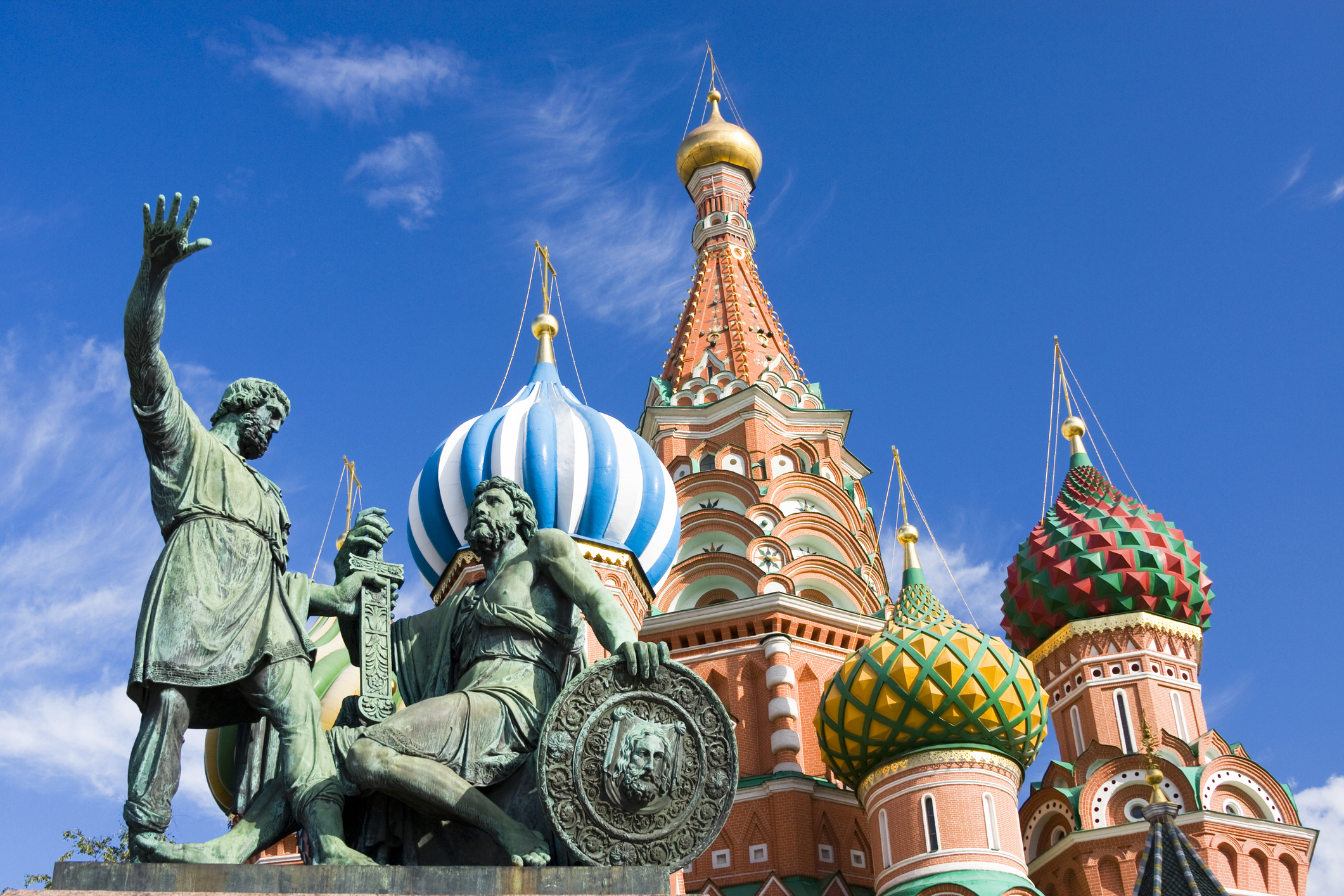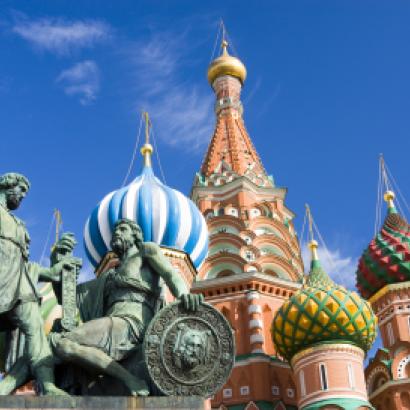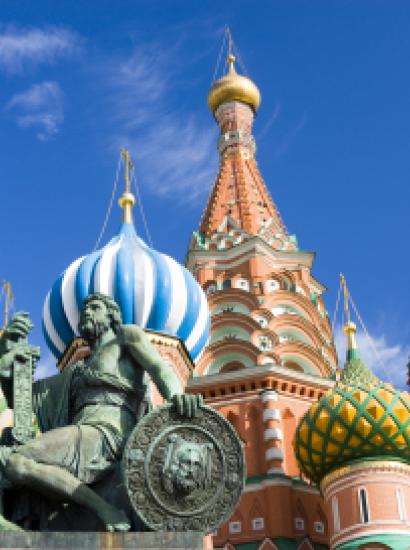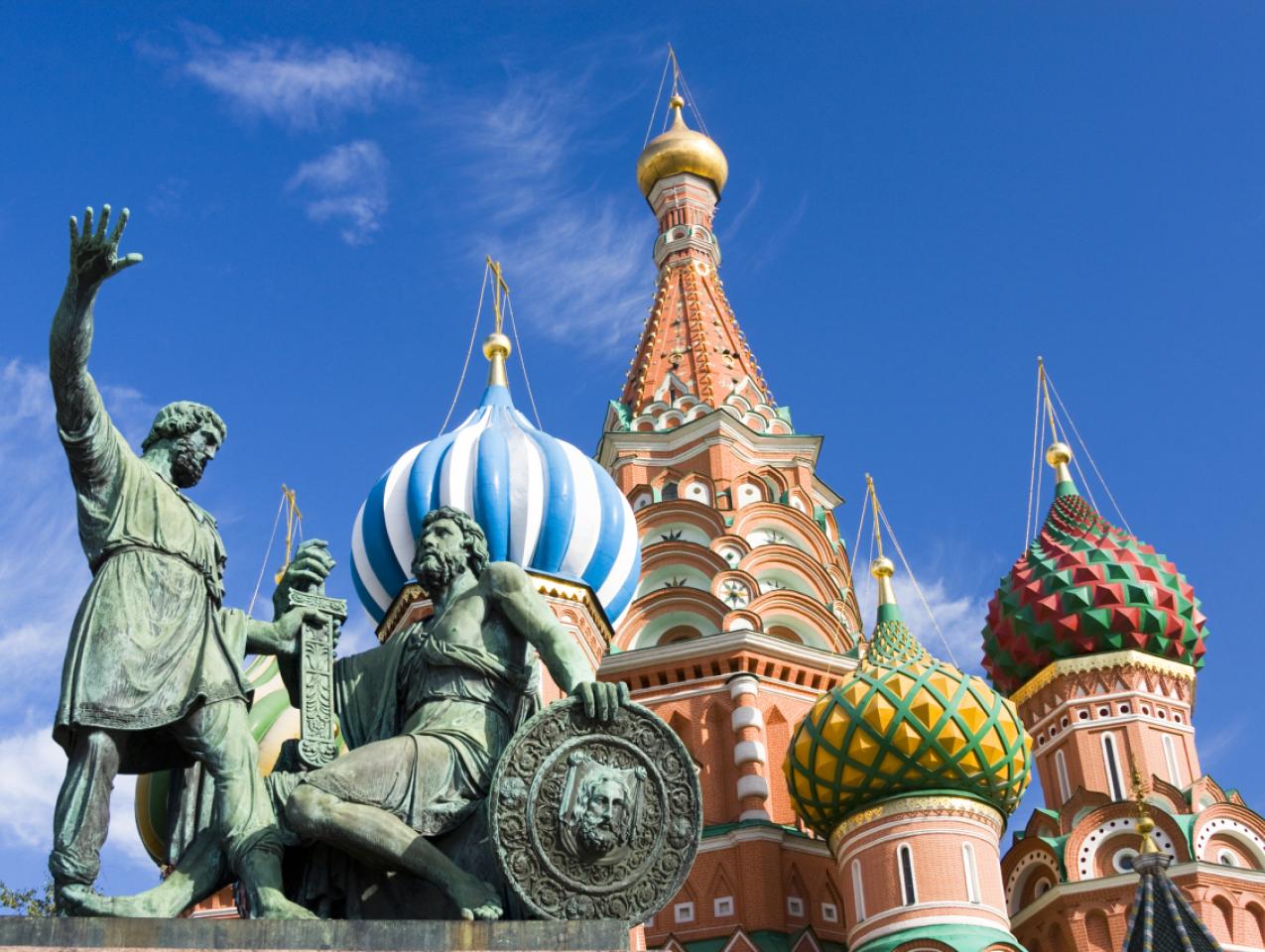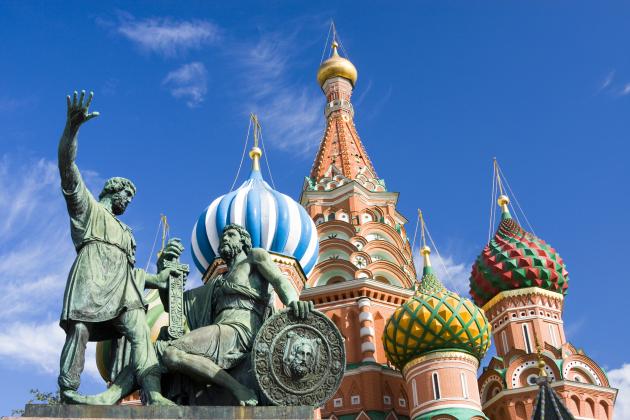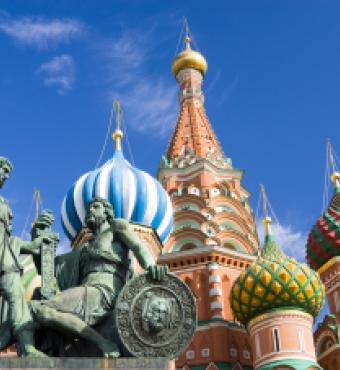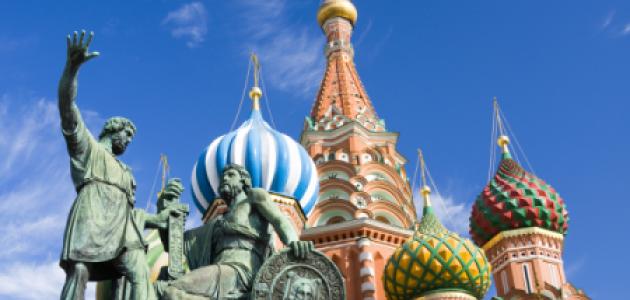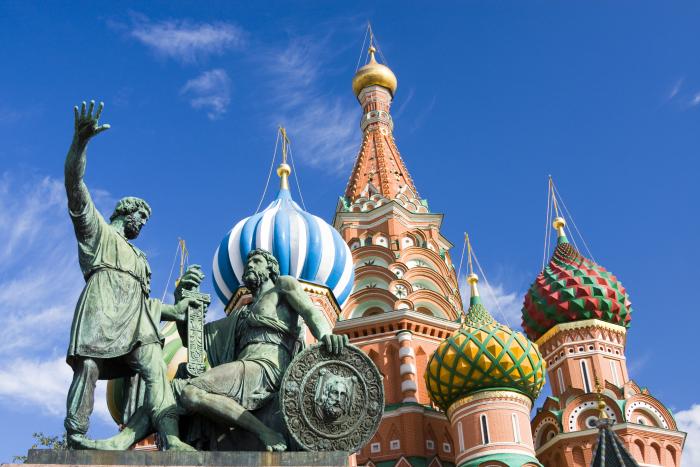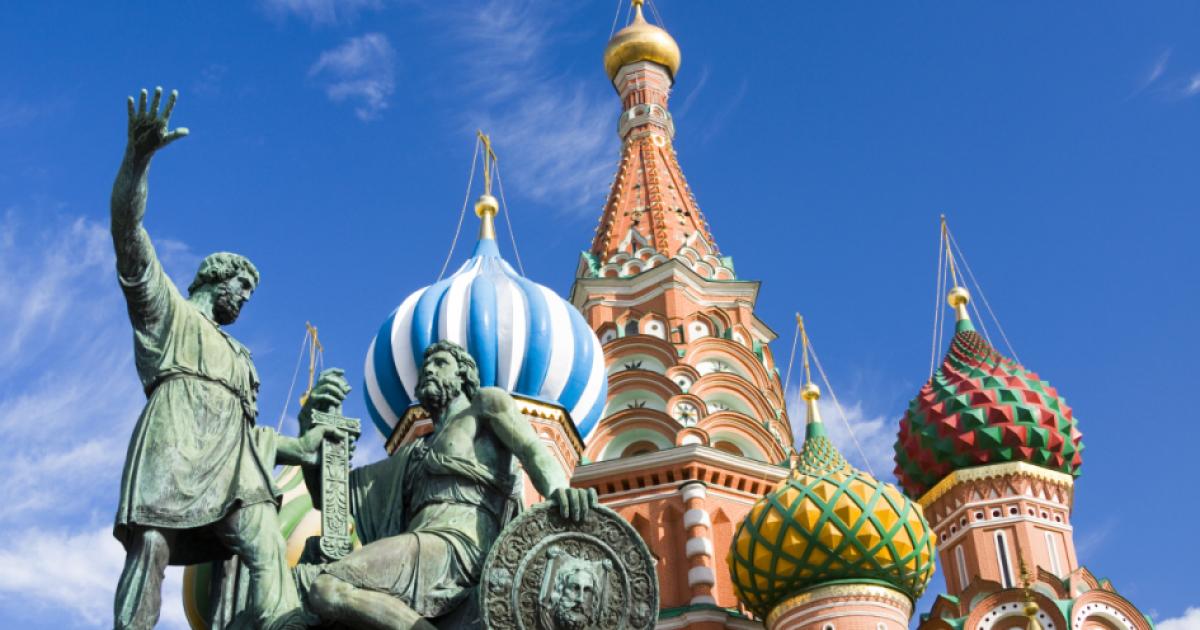Russians are richer today than they have ever been in their thousand-year history. Today, Russians enjoy a GDP-per capita of $11,9500, down from a 2013 peak of $16,000, but moving in the right direction again. Between 2000 and 2008, Russia’s GDP grew by 83%, productivity grew by 70%, Russia’s share in the world economy grew fourfold, from 0.6% to 2.7%, real wages increased by 3.4 times, and real pensions increased by 2.8 times.1 The lives of Russians also have improved considerably regarding non-monetary indicators measured by various indexes.2 After a horrendous dip in life expectancy, especially among men, after the collapse of the Soviet Union, the numbers for both men and women have been climbing steadily since 2004 and have now reached their highest levels ever.3 The Russian political system has moved in an autocratic direction for the last two decades, but individual freedoms remain high compared to earlier centuries in Russian history.
But have Russians maximized their potential for personal prosperity and well-being? The question of course is a hypothetical, but the answer most certainly seems no. Russians could be much richer today -- the Russian economy as a whole could be much bigger and stronger -- had Russian leaders created the permissive conditions for technological innovation and investment. Given Russia’s rich human capital endowments, Russia is underperforming. Russia should be one of the technological centers of the world; a second Silicon Valley. But so far, that potential has not been realized. None of the largest tech companies in the world are Russian. Russia produces few international patents. Automation in Russian companies is far behind advanced industrial economies.4 Russians have failed to realize this potential, not because of cultural, historical, and geographical factors, but because of decisions – mostly political decisions – taken by post-Soviet leaders, including first and foremost Vladimir Putin. Russians are well off today, but could be so much more prosperous. Politics are to blame.
To develop this argument about how politics have held back Russian economic development particularly through stifling technological innovation and investment, this paper proceeds in seven parts. Part one considers the legacies of the Soviet Union as a possible explanation for Russia’s current conditions. Parts two and three examine more proximate causes of Russia’s economic development, focusing in particular on how the emergence of new political and legal institutions first stimulated and later stifled the growth of the high-tech sector. Part four explores the pernicious effect of some technological investments in the Putin era. Part five discusses the Medvedev era, when the development of high-tech became a national priority. Part six examines the negative consequences for high-tech innovation and investment in the current Putin era. Part seven concludes.
The Mixed Soviet Legacy for Technological Innovation
For most centuries, Russia has lagged behind other European countries regarding economic and technological development.5 During the Soviet period, communist dictatorship did succeed in transforming Russia and the rest of the USSR from an agrarian to an industrial economy. At times, including most prominently in the 1930s, the Soviet system even seemed to outperform European economies. During the final decades of the communist era, however, the Soviet economy fell back behind the capitalist economies in Europe and elsewhere in the world. The Soviet system’s inability to innovate played a central role in the country’s relative economic decline. The communist regime could command peasants to become factory workers and thereby drive industrialization, albeit a very inefficient and corrupt form of industrialization. But the Soviet regime could not command people to become entrepreneurs or invent technologies, or found companies needed to prosper in the post-industrial age. Economic stagnation, as well as ideas to combat it, played a central role in the Soviet Union’s collapse.
However, not all of the Soviet inheritance was negative for Russia’s future economic potential in a post-industrial era. Most importantly, the Soviet system did make major investments in education and science. Cold War competition with the United States required the Soviet regime to make massive investments in military technologies. Even as Soviet citizens endured major shortages in consumer goods and basic living standards, the Soviet government produced some of the most advanced rockets, nuclear warheads, tanks, radars, and communication systems in the world. To become a military superpower in the twentieth century, the Soviet system invested heavily in scientific education, especially in the hard sciences. By the time of the Soviet collapse, literacy rates in Russia creeped close to a hundred percent.6 Soviet universities and institutes produced tens of thousands of PhDs in all fields, but especially in the hard sciences.7 This rich human capital should have given Russia a real advantage in the post-industrial era.
Russia’s Transition from a Command Economy to a Market Economy
The transition from communism to capitalism produced an economic depression in every country in Europe and Eurasia. The degree and length of this transitional economic contraction, however, varied considerably in the post-communist world. Contrary to initial expectations, those countries that made the quickest transition to democracy also returned to economic growth the fastest.8 Russia was in the middle of the pack.
Russia’s imperfect and partial transition to democracy and markets in the 1990s produced a mix of positive and negative factors for the development of technology in Russia. The biggest initial impact of new political freedoms was a massive brain drain. Tens of thousands of smart, well-trained engineers and scientists moved to countries where they could exploit their talents most effectively. Israel was the biggest beneficiary.9 But the United States, and the Silicon Valley in particular also benefited from the Soviet and Russian emigration.
And yet, not every talented innovator or technologist left Russia. The legalization of private property and market prices eventually created the permissive conditions for Russian tech companies to emerge. Some grew directly out the Soviet military industrial complex, including Klimov, Elvis Plus, Khrunichev, and MCST Elbrus. In other high-tech sectors, defense conversion occurred not at the enterprise level but at the individual-level, as employees of Soviet military enterprises left and converted themselves to work as employees for private companies – foreign and domestic – or started their own firms.
During this era, Russian companies never produced hardware products – computers, chips, or phones – to compete with Western and Asian companies. But several Russian internet, software-driven companies did withstand tremendous competition from Google, Facebook, and others to survive. The search engine company, Yandex, competes with Google for market share in Russia and a few other countries. Mail.ru managed to compete under market conditions with Gmail and Yahoo. Vkontakte and Odnoklassniki have survived Facebook’s global ascendency. And Kaspersky not only emerged as Russia’s largest cybersecurity company, but even managed to secure some market share in the United States and around the world before Russian interference in the 2016 residential election brought new scrutiny to its relations with the Russian government. In the wake of the Soviet Union’s collapse, Russia’s high-tech companies started well behind their competitors in the United States and Asia but demonstrated a resilience to compete on par with many other European countries. And unlike their Chinese counterparts, these companies formed and grew largely without the benefit of state protection or subsidies. A decade ago, the possibility of Russia emerging as a technology hub in the global economy seemed real.
Political Impediments to Technological Innovation
In 1999, the Russian economy grew for the first time ever since independence in 1992. Painful economic policy reforms from earlier in the decade provided the predicate for this growth, as did some important additional Kremlin decisions during Putin’s first years in office.10 After his election in 2000, Putin cut individual tax rates to a flat rate of 13%, cut corporate taxes to the maximum tax rate of 24%, and introduced regulatory, banking, and land reforms.11 These reforms contributed to economic growth, even if the main drivers of Russia’s economic recovery were increasing oil and gas prices. In addition, domestic consumption of consumer goods, as well as rapid expansion of transportation, construction, and telecommunications also contributed to this extraordinary period of Russian economic expansion.12 Russia sustained an annual growth rate of seven percent from 2000 until the worldwide financial crash in 2008.
During Putin’s first two terms as president, high-tech firms and high-tech investment played only a marginal role in stimulating economic growth. Most growth came from raw materials exports, which in turn fueled domestic consumption.13 During this period, many economists – both in Russia and the West – warned of Russia’s reliance on the export of raw materials; the “Dutch curse” for some, the “oil curse” for others.14 Russia had to use this period of economic growth and government revenue windfalls to stimulate the emergence of a high-tech sector, or so many argued at the time.
Putin did not listen. On the contrary, after an initial spurt of pro-market reforms in the first years of his presidency, Putin showed little inclination to create friendly conditions for private sector development of any kind, including the high-tech sectors. To his credit, he allowed the technocrats in his government and the Central Bank to maintain sound fiscal and monetary policies. But Putin pumped the brakes on pursuing those hard, complex institutional reforms needed to stimulate the formation of new firms and new investment. Rule of law reforms ground to a halt. Privatization stopped. And then most dramatically, in October 2003, Putin undermined an already weak commitment to secure property rights when he arrested Russia’s richest businessman at the time, Mikhail Khodorkovsky, and stripped him of his most valuable assets in his Yukos oil company. Eventually, those assets ended up in Rosneft, a state-owned enterprise run by Putin’s close confidant, Igor Sechin. Other acts of asset stripping and redistribution occurred, sometimes involving Western investors. Insecure property rights in turn scared away investment.
More generally, Putin weakened institutional checks on his executive power.15 He seized control of Russia’s major independent television networks, constrained the autonomy of political parties and non-governmental organizations, and with the arrest of Khodorkovsky scared away private sector involvement in politics. Putin also undermined the autonomy of regional governments, including doing away with direct elections for governors in 2004. By the end of his second term, Putin had consolidated an autocratic regime.
The coincidence of new economic growth and growing autocracy in Russia in the 2000s created the false impression that a strong hand in the Kremlin and an alleged strong Russian state were responsible for economic development. Putin’s popularity was most certainly fueled by this impression. It was a spurious correlation.16 Russian growth during this period was impressive, but actually lagged behind most other post-communist countries. Russians were doing well, but could have been doing much better. As Andrei Illarionov wrote in 2007, “In a comparison with the 15 former Soviet republics, Russia is now third to last when it comes to economic growth.”17
The genuine private sector suffered generally, but the high-tech sector suffered to an even greater degree. Venture capitalists like the rule of law. Foreign investors fear arbitrary redistributions of property. Some industries have to invest locally in Russia to do grow. If you are an oil company, you have to invest where the oil is. That’s why Exxon-Mobil stayed engaged in Russia during this era. If you sell perishable consumer products, you often have to manufacture locally. That’s why Pepsi made a major investment in purchasing Wimm-Bill-Dann in 2011. But if you are making products based on software, in which the main factor endowments are brains, you can be located anywhere. You are not required to be physically in Russia. Nor are those Russians working in the high-tech sector required to stay in Russia. They can move their greatest asset – their own knowledge and intellect – in one flight.
And that’s what has happened.18 Few high-tech firms – foreign or domestic – made major new investments in Russia in the Putin era, while many Russians working in this sector emigrated to the Silicon Valley and other technological hubs outside of Russia.
State Investments in Pernicious Technologies
Some high-tech enterprises, however, experienced real growth in the Putin era – those associated with the military. Putin reversed years of decline and invested heavily in the Russian military industrial complex. He invested billions to modernize both Russia’s conventional and nuclear weapons. Over time, these industries recovered well enough to increase exports substantially. Last year, Russia was the second largest arms exporter in the world, just behind the United States. Putin’s government also invested heavily in Russia’s intelligence services, including signals intelligence (SIGINT), propelling Russia back to superpower status in this domain along with the United States and China. Putin also invested billions into new propaganda instruments, including conventional platforms like television – RT – digital – Sputnik and Russia Direct – and print – Russia Beyond the Headlines – as well as new innovative modalities for spreading Kremlin information and disinformation such as the Internet Research Agency. The results of these technological investments have been on display during Russian military interventions in Ukraine and Syria, Russian cyber attacks on Estonia in 2007, Georgia in 2008, Ukraine in 2014, and Russian disinformation campaigns during elections in democracies, including most dramatically during the U.S. 2016 presidential election.19
The Medvedev Mini-Interregnum
Between 2008-2012, Dmitry Medvedev served as Russia’s president, while Putin served as prime minister. During this four-year period, the basic trajectory of Russia’s economic and political policies did not change. Medvedev, however, did tweak some policies and aspired to pursue even greater changes regarding the development of Russia’s high-tech sector.
In his public speeches and private comments, Medvedev expressed concern about Russia’s continued dependence on raw material exports as the driver of Russian economic growth. He wanted to develop other sectors of the economy, especially the high-tech sector. To do so, Medvedev understood that political modernization would facilitate economic modernization. Medvedev stated bluntly, “Today we are building new institutions based on the fundamental principles of full democracy…This democracy requires no additional definition. This democracy is effective and is based on the principles of the market economy, supremacy of the law, and government that is accountable to the rest of society. We are fully aware that no undemocratic country has ever become truly prosperous, and this for the simple reason that it is better to have freedom than not to have it.”20 Medvedev also ridiculed a Russian “culture of legal nihilism that in its cynicism has no equal anywhere on the European continent.”21 And Medvedev took some small steps towards greater accountable government, including most dramatically creating the Ministry of Open Government Affairs headed by Russian entrepreneur, Mikhail Abyzov, and joining the international Open Government Partnership, “a partnership that connects governments, reformers and civil society leaders around the world to make their governments more transparent, inclusive and accountable.” Rhetorically, Medvedev also signaled that Russia is open for business and pledged to improve governance to attract more foreign investment.
In parallel to these broad strokes on the need for political modernization and strengthening of the rule of law, Medvedev launched several concrete projects aimed at stimulating Russia’s knowledge economy for high-tech sectors. Skolkovo was his most ambitious project. At Skolkovo, a region outside of Moscow, Medvedev hoped to build from scratch an ecosystem similar to the Silicon Valley, designed to encourage entrepreneurship and innovation among Russian companies and foreign investors. Medvedev first announced the idea of Skolkovo in November 2009 and formally launched the project the following year. In the summer of 2010, Medvedev traveled to the Bay Area to learn firsthand about the necessary factors that combined to stimulate the emergence of Silicon Valley, including the important but frequently forgotten role that government support for research and development has played and continues to play in the Valley as a whole and at Stanford University in particular. He visited several major companies, including Cisco, Apple, and Twitter, and left California even more excited about the possibilities of building something similar in Russia.
To catch up again in this new sector of the global economy, Medvedev’s government offered tax breaks and state funding to companies – foreign and domestic – who agreed to locate or relocate to Skolkovo. Some major American companies were first movers, including Cisco, which relocated its Russia and CIS headquarters to Skolkovo,22 and Boeing, which announced the creation of its innovative and research training center at Skolkovo in 2013, and then opened that center in 2016.23 Today, there are roughly 5,000 resident companies at Skolkovo.24 Understanding the importance of Stanford to the development of Silicon Valley, Medvedev provided new resources to a business school located at Skolkovo, called Moscow School of Management Skolkovo, and started from scratch the Skolkovo Institute for Science and Technology, or Skoltech. To jumpstart Skoltech’s emergence, the Russian government signed a two hundred million dollars plus cooperative agreement with MIT, to bring MIT professors and researchers to the new campus. The first president of Skoltech was MIT professor and aerospace engineer Edward Crawley. In 2015, Skoltech graduated its first class. Today, Skoltech boasts 200 professors, 205 postdocs and researchers, and 1,200 Master’s and PhD students.25
During the Medvedev years, other companies focused on investing in high-tech were established and/or promoted. Rusnano, for instance, is a government-owned joint stock company that invests in nanotechnology and other high-tech projects. Rusnano was founded in 2007 as a state corporation – the Russian Corporation of Nanotechnologies – but then became a more independent joint stock company Rusnano in 2011, and emerged under the leadership of Anatoly Chubais as one of Russia’s largest technology investors, taking positions in both Russian and foreign companies. According to their website, “total volume [of investments] over the last 10 years is in excess of 190 billion rubles. As of the end of 2016, the revenue of portfolio companies in which RUSNANO was an investor amounted to 369 billion rubles a year, and the total output of the entire Russian nanoindustry was about 1,580 billion rubles.”26 Several other private Russian VC funds also appeared or grew during this period, including Digital Sky Technologies (DST Global), Fort Ross Ventures, Almaz Capital, Bright Capital, Runa Capital, and Flint Capital.
Russian research and development in cutting-edge technologies remained well behind the United States and other innovation leaders. For instance, regarding artificial intelligence, China and the United States, not Russia, were considered the world’s superpowers.27 And the internet economy in Russia contributed roughly 2.6% of Russia’s GDP by 2015, below the average of G-20 countries, but accelerating at a faster rate than many.28 During these Medvedev years, there was a sense of potential, a belief that Russia’s tremendous intellectual resources might help the country emerge as a winner in the post-industrial era.
Doubling Down on Putinism
Putin’s reelection in the spring of 2012 tampered this enthusiasm for Russia’s high-tech potential, both for actions he took and actions he did not take. Regarding new Putin policies, several served to stifle economic growth in general and high-tech in particular. After winning reelection in March 2012, Putin further constrained autonomous political activity. He made demonstrations harder to organize, arrested opposition leaders, and pushed off the airwaves or into political exile many in the independent media. 29 His government also constrained even further non-governmental activities, especially by criminalizing the receipt of foreign funds. The Russian government also forced USAID to close and eventually outlawed several other Western NGOs and foundations.30 After protests in 2011–2012, the Russian government started blocking certain websites and passed laws regulating content on the internet.31 One new draconian law compels Western social media companies to store their data on Russian citizens in Russia. As a result, LinkedIn pulled out, assessing that the risk to their integrity was greater than any economic reward. Other social media companies such as Facebook, Google, and Twitter remain in negotiations with Russian authorities over the implementation of this law.32 In 2017, Putin adopted a Strategy for Developing the Information Society in Russia, which provided further constraints on information on the internet. More generally, Putin also expanded the role of the state in the economy, including increasing state ownership, which by some estimates now hovers around 60 percent, again weakening the permissive conditions for entrepreneurship and private investment. Corruption continues to stifle economic growth and discourage investment. In 2013, Putin withdrew from the Open Government Partnership.33 In 2018, after his reelection for a fourth term, Putin dissolved the Russian Ministry of Open Government Affairs.34
Putin’s foreign policies also directly impacted in a negative way Russia’s high-tech sector and international economic integration more generally. In response to Putin’s decision to annex Crimea and support separatists in eastern Ukraine, the United States, the European Union and several other countries imposed the most severe economic sanctions against Russia or the Soviet Union ever. These sanctions implemented by the United States, Europe, and other countries have produced negative effects on the Russian economy. Starting in the third quarter of 2014, the Russian economy contracted for nine consecutive quarters; sanctions contributed to this decline.35 By some estimates, sanctions were responsible for one and a half percent of GDP contraction in 2014.36 Others assess that the impact of sanctions, independent of falling oil prices, was as much as 2-2.5% for the first few years after Russia’s intervention in Ukraine.37 Hardest hit were Russian companies and banks seeking to raise capital on international markets. In turn, according to the EBRD’s chief economist, Sergey Guriev, “Russia’s inability to borrow has led to a dramatic depreciation of the ruble and a fall in real incomes and wages.”38 Capital outflows had also been steady for years and then accelerated after sanctions, jumping from $61 billion in 2013 to $151.5 billion in 2014.39 In the wake of sanctions, foreign direct investment also slowed, though numbers are now moving slowly in positive direction again. Some planned future investment has been cancelled, including most dramatically Exxon-Mobil’s decision to suspend its joint investment projects with Rosneft, at one time estimated to total $500 billion. Other potential foreign investments, which did not occur because of sanctions, are harder to track – it’s hard to measure a non-event – but anecdotally Western investors and companies doing business in Russia have stated publicly and privately that uncertainty about future sanctions has squelched interest in attracting new investors to the Russian market. Most of those already in Russia will fight to stay; those who may have thought about investing in Russia market are now looking for less risky opportunities. Putin’s belligerent foreign polices also have accelerated Russia’s brain drain; “In 2014, the number of Russian emigrants topped 300,000 for the first time since the early 1990s.”40 And those leaving are not unskilled laborers, but Russia’s best and brightest – the very educated labor force needed to grow Russia’s high-tech sector.
In addition to these domestic and foreign actions, which weakened the incentives for technological innovation and investment, Putin also signaled a disinterest in Medvedev’s high-tech agenda. State spending on Skolkovo has come under greater scrutiny. Viktor Vekselberg, Skolkovo’s chairman, had his offices raided. Pavel Durov left Russia, becoming a citizen of a small Caribbean nation of St. Kitts and Navis, after he had lost control of his company, Vkontakte, to an investment firm closely tied to the Kremlin.41 Durov is the most high-profile high-tech entrepreneur to flee Russia recently, but tens of thousands have followed his example.
Episodically, Putin has signaled in words his understanding of the need for the Russian economy to modernize and diversify. Some pockets of innovation continue to occur.42 Some conditions for business have improved.43 However, Putin values control over innovation; vertical instead of horizontal arrangements. He is willing to sacrifice economic dynamism for stability (as defined by him). As former deputy finance minister, Sergey Aleksashenko has written, “Putin has never believed in the power of competition and private initiative. He did not see these factors as contributing to the growth of the Russian economy, and at the same time he was certain that state officials were best placed to determine the country’s long-term economic interests.”44 A political leader with such an orientation will never foster the conditions for high-tech entrepreneurship.
Chinese Dreams, Russian Realities
Putin believes there is an alternative model. Instead of Silicon Valley (a place that he has never visited), Putin seeks inspiration and support for Russia’s economic development in Beijing. Putin and his current team of economic advisors believe that Russia can replicate China’s success in state-led development.45 This new fascination of the Chinese model harkens to the late Soviet period when Gorbachev and advisors also hoped to emulate the Chinese economic miracle.46 Regarding trade and investment opportunities, Putin is more interested in China than the United States these days.47 Moscow and Beijing have entered into several arrangements to spur economic growth through technological cooperation.48
China’s growth over the last three decades has indeed been miraculous. Through the implementation of prudent, patient market reforms, Chinese leaders have pulled more people out of poverty in three decades than ever witnessed before in world history. Most of that growth was stimulated by the transition from an agrarian based economy to an industrial economy during a period of market reforms. It was the opening of the Chinese economy, not autocracy, that spurred this growth, but that nuance is often lost in those celebrating the virtues of a “strong hand” for economic development. The Chinese government as well as firms connected to the state also have made major investments in scientific knowledge that has allowed China to race ahead of more advanced industrialized economies in artificial intelligence, robotics, big data, and tele-communications.49 The Chinese government also has demonstrated an ability to nurture new high-tech firms in the post-industrial age, including Tencent, Huawei, Alibaba and Baidu. Putin would love to emulate these Chinese achievements.
Can Russia follow the China model? The evidence so far suggests no.







